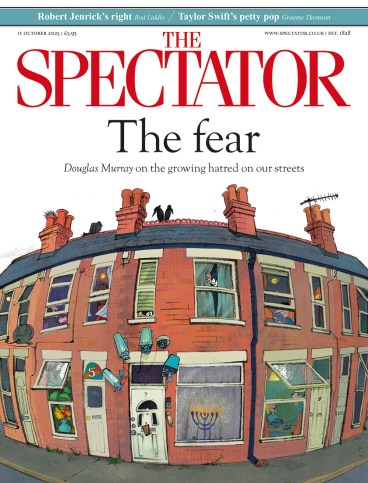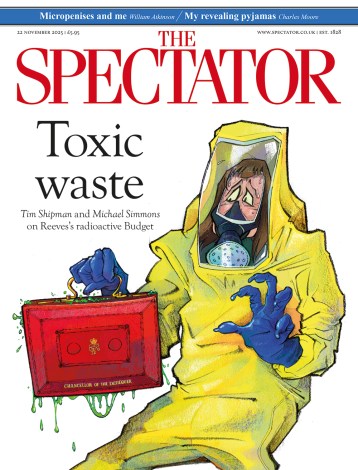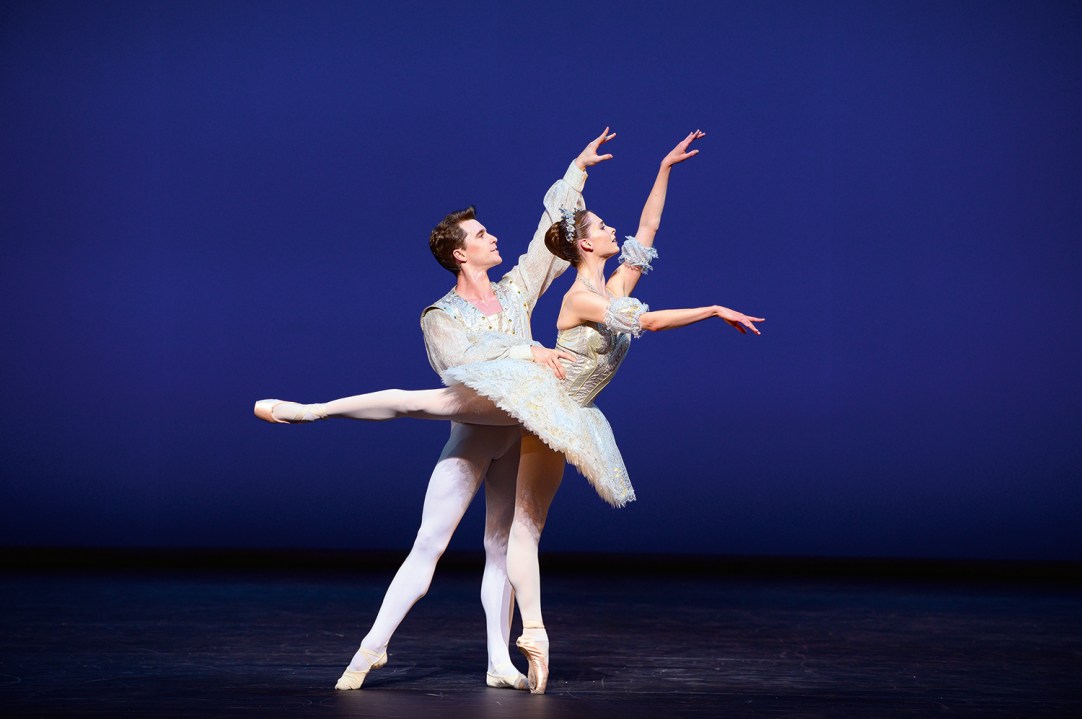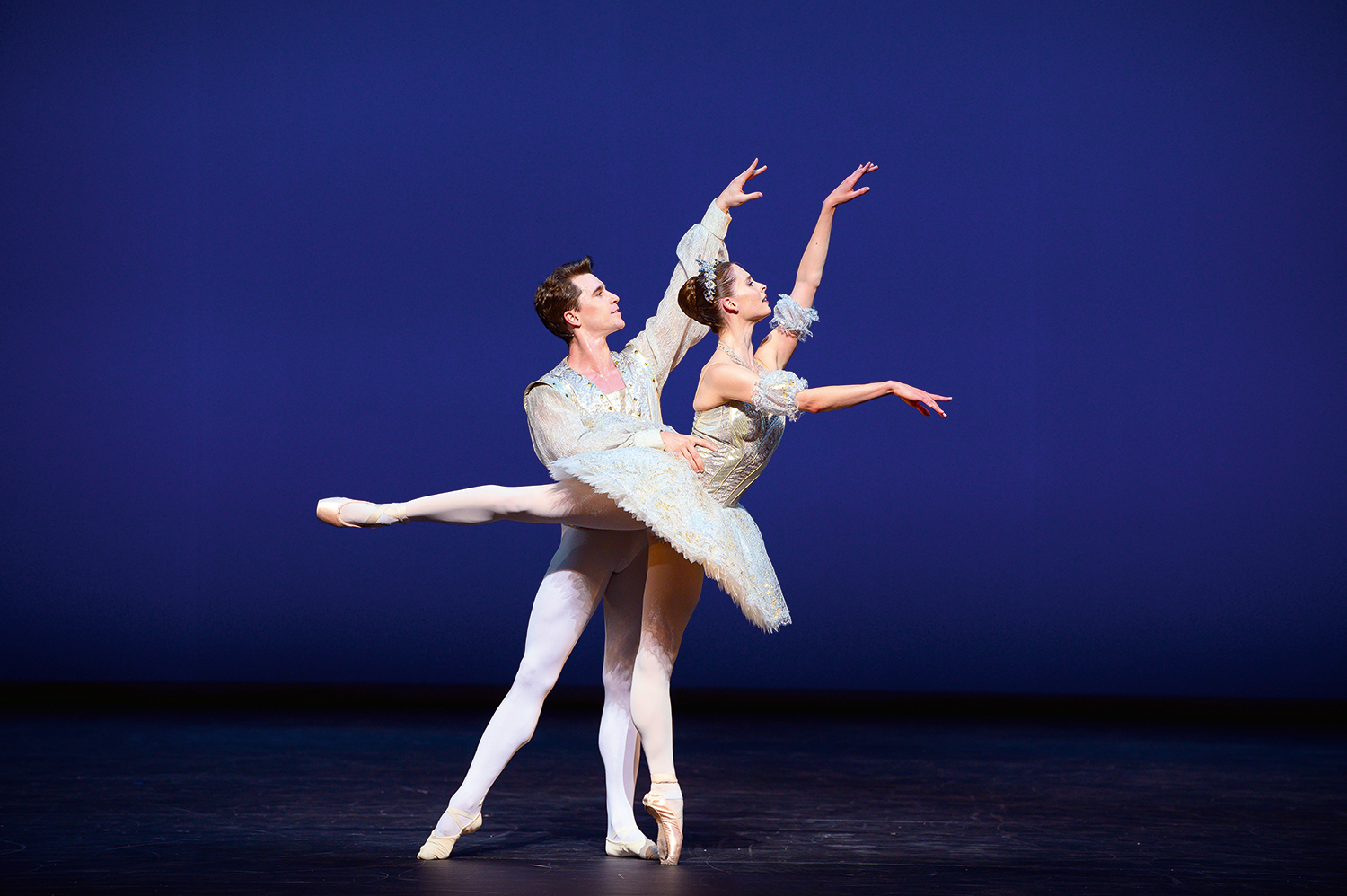
R:Evolution is a pun, presumably intended to suggest that tradition is not static and the obvious truth that change always grows out of what has come before. A useful idea, of course, even if it’s one that the four short works selected under this title by English National Ballet doesn’t smoothly illustrate. The management is, however, due a pat on the back for trying; budget cuts and the power of the grey men in marketing means that such programming is becoming increasingly rare, victim of the regressive fashion for full-length narratives and fairy tales.
ENB starts by juxtaposing two works conceived in 1947. Balanchine’s Theme and Variations is one of his periodic nostalgic homages to his roots in Tsarist St Petersburg. Imperious and imperial, parading to a Tchaikovsky brash with drums and trumpets, it is exceptionally challenging technically for the two soloists – Baryshnikov, no less, described it as ‘the most difficult ballet I have performed’ and thought that his ‘legs would drop off’ after his first solo – although the audience might not notice its cruel demands for sharp turns and intricate footwork as well as its sheer relentlessness. Emma Hawes and Aitor Arrieta measured up admirably, compensating in elegance and poise for what they lacked in diamantine precision. They were handsomely framed and supported by the excellent corps, whose formal manoeuvres culminated in an exhilarating kaleidoscopic finale. Such is Balanchine’s invention and musicality that I could happily have watched it all over again, then and there.
Its tutus and chandeliers stand in stark contrast to Martha Graham’s contemporary Errand into the Maze, a version of the myth of Ariadne and the Minotaur, in which the monster becomes a bogeyman that the woman must learn not to fear. Compounded by Isamo Noguchi’s sparely furnished set and Menotti’s pulsating score, the imagery is highly sexualised through earthy movement focused on the pelvic and gluteal musculature. Minju Kang and Rentaro Nakaaki enact this archetypal fable with absolute dramatic conviction and dance it with authority, every bit as strong as Natalia Osipova and Marcelino Sambé were in the Royal Ballet’s production earlier this year.
Baryshnikov thought that his ‘legs would drop off’ after his first solo
Graham rejected the classicism that infatuated Balanchine, finding a different source of energy and flexibility in the human body. William Forsythe, on the other hand, has chosen to drive the vocabulary of ballet much harder, releasing it from its obsession with symmetry and exploiting its physicality to the point of aggression and exhaustion. His dancers are having fun, but there’s no love lost between them. They compete rather than harmonise. ENB has recently made a speciality of Forsythe’s razor-sharp choreography, but the hard-working cast on show here in Hermann Schmerman (Quintet) handled it too cautiously; unless it cuts, it won’t quite spark.
Surely Dawson has more to offer than this pretentious guff
But oh dear, how low the temperature dropped at the end of this otherwise very enjoyable and creditable evening. This was the second time I have endured David Dawson’s Four Last Songs, and my initial dim view of its quality was confirmed. This is just slush, responding to Strauss’s soporific orchestral lieder (well sung from the side of the stage by Madeleine Pierard) with a banality that put me in mind of Shelley’s phrase, ‘the intense inane’. In flesh-coloured nudie tights, a dozen dancers flap their arms around, melt into each other ecstatically and circle the stage looking celestially entranced. There’s no contrast of mood, no nuance, no meaning: it looks like ballet dreamt up by AI. Dawson has a reputation as one of the best choreographers on the scene today: surely he has more to offer than this pretentious guff.








Comments